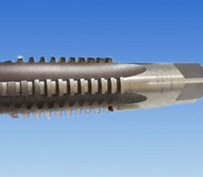BSP Thread Gauge| How to identify and Measure pipe and non-pipe threads
BSP thread gauge or the British Pipe Standard fitting thread gauge is one of the highly versatile threads used across the globe today. The BSP thread is made in two versions – parallel and tapered, like other pipe thread gauges.
In both the types of BSP thread gauges, the thread flank angle is 55 degrees. Many times, BSP tapered thread is mistaken as the NPT. However, the NPT thread gauges have a thread flank angle of 60 degrees. The BSP thread comes in imperial sizes of 1/8, ¼, ½, 1, 2 and so on. Typically, the BSP threads seal through a 30-degree chamfer in the male threads and with 30 degrees recessed cone in a female thread.
Some considerations on application
In case of a port, the application one requires to use is either a bonded washer or an O rings alongside washer for a complete seal in the parallel thread gauges.
In case of tapered BSP thread gauges, the sealing is done across the thread winding and using a Teflon tape or a thread dope for additional help.
The male BSPT (tapered) can thread into the female BSPP (parallel) provided the female thread does not swivel and remains fixed.
Identification
One can identify the parallel fittings alongside their specifications performing a few calculations. The thread size can be found by measuring the outer diameter of the BSP thread in inches and take off ¼ inch from it. (Suppose outer diameter is 1 inch, the thread size is 1”- ¼” = ¾".)
With the thread is the size in hand, the next thing required to be done is finding out the numbers of threads in every inch. This helps to verify a BSP thread gauge. Now, you have to count the number of threads of the gauge in ¼ inch length and multiply the number with 4 (For example, you have 2.5 thread turns, multiply this by 4, you have10 thread number).
Now use the chart given by the manufacturer and match it with the given size and number of threads per inch for finding the related dimensions. These include an actual major diameter in mm and actual major diameter in inches.
The same process is used to find the size and fitting of BSP tapered thread gauges except that you would use the inner diameter in place of the outer diameter. For determining the internal diameter, one simply had to get a calliper reading of the bore of the fitting.
In various industries, there are six major types of thread gauges that are employed. These include UN/ UNF, NPT/ NPTF, BSPP, BSPT, metric parallel, and metric tapered. Through the strategies discussed above, one can identify and measure the pipe thread gauges and non- pipe thread gauges like UN/UNF, metric parallel and metric tapered (use calliper for measuring internal diameter for thread size).
It is imperative to select the specified kind of thread gauge for a hydraulic system, adapter or other systems. Choosing a wrong part can lead to loss of time and money. The worst thing is that it can be a serious safety hazard.
You can buy the versatile BSP thread gauge online. Make sure you purchase only from a reputable supplier.




Comments
Post a Comment